I Had Ramen Every Day for a Week—Here’s What Happened
Updated: Apr. 14, 2024
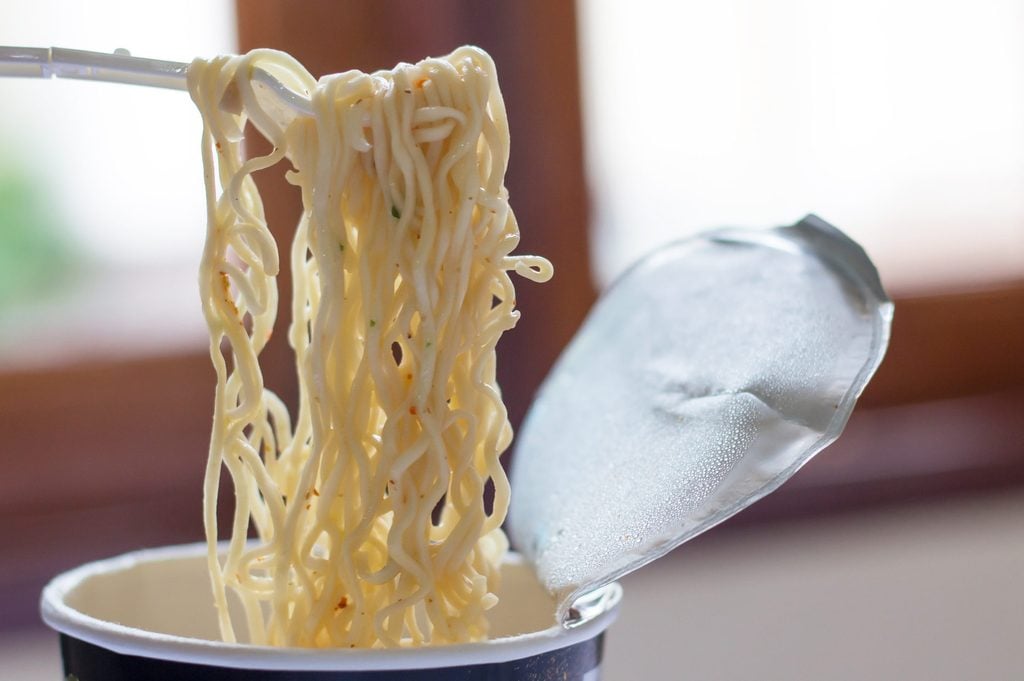
Ramen soup is an easy-to-prepare comfort food, but nutrition specialists say eating it too often could have an oodle of consequences on your health.
Our editors and experts handpick every product we feature. We may earn a commission from your purchases.
Ramen has a unique way of satisfying the soul, starting with the first scoop from that piping-hot bowl of seemingly endless noodles.
A traditional Japanese diet—high in vegetables, fruits, unprocessed grains, fish, and seafood, and which contains modest amounts of lean meats and dairy—is healthy because traditional diets also tend to be void of processed and refined foods and sugars. But is eating ramen, one of Japan’s “convenience foods,” a healthy diet choice?
What are ramen noodles?
Ramen is a type of noodle soup. According to Encyclopaedia Britannica, ramen was originally brought to Japan by Chinese traders in the 1880s. Called la mian in Cantonese, or “stretched out noodles,” it was popularized as ramen in Japan, and includes chewy wheat flour noodles in a brothy soup base with various toppings, such as veggies, meats, or seafood.
31 Healthy Soups That’ll Fill You Right Up
Is ramen bad for you?
I’d heard warnings from my parents and my doctor that ramen noodles weren’t good for me, but I never really understood why…until a 2019 study found that the regions of Japan with the highest prevalence of ramen restaurants also had the highest rates of death from stroke. The doctors who led the study argued there was an association. According to WebMD, the high levels of sodium in some ramen broths may cause health concerns, including an increased risk of metabolic syndrome in women and a higher risk of heart failure.
Still, for the sake of journalism, I decided to see what effect ramen would have if included in my daily diet. Ahead, what I learned after eating ramen every day, for every meal, for five days.
10 Healthy Instant Pot Recipes We’re Loving for Winter
Eating ramen every day for a week
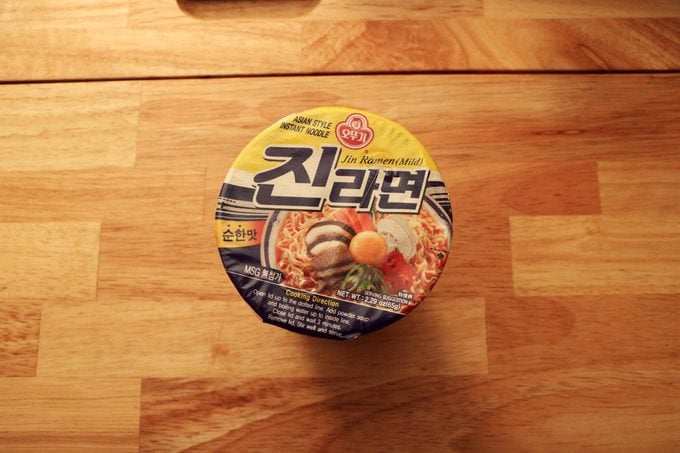 Day 1 started off as any normal day would; I boiled up a cup of Jin ramen. I was saving time and money, and I couldn’t complain. Throwing in the comfortably straightforward packs of dried veggies and noodles in a bubbling pot, I felt confident that this would be a relatively easy accomplishment. I had no problem downing the entire bowl and went back for seconds.
Day 1 started off as any normal day would; I boiled up a cup of Jin ramen. I was saving time and money, and I couldn’t complain. Throwing in the comfortably straightforward packs of dried veggies and noodles in a bubbling pot, I felt confident that this would be a relatively easy accomplishment. I had no problem downing the entire bowl and went back for seconds.
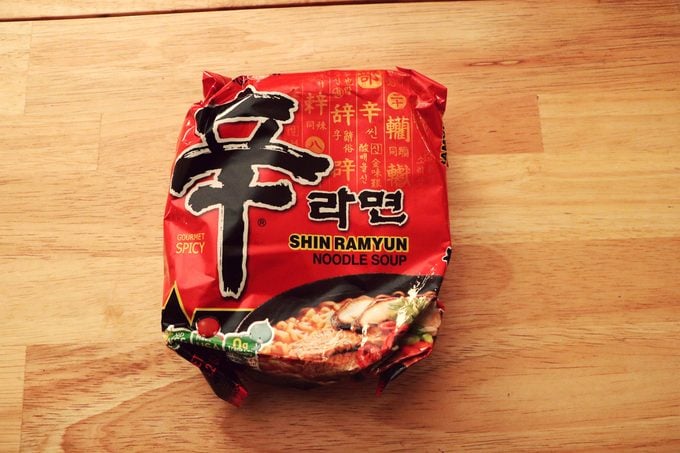 When dinner rolled around, I went for the bright red package of classic Shin ramen (a Korean favorite), and even threw in some extra veggies for good measure.
When dinner rolled around, I went for the bright red package of classic Shin ramen (a Korean favorite), and even threw in some extra veggies for good measure.
I found that the first day flew by with no complications. I consumed both dishes fairly quickly, and apart from a slight craving for burgers, my body felt entirely normal at the end of the day.
The Nutrition Magic of Mushrooms
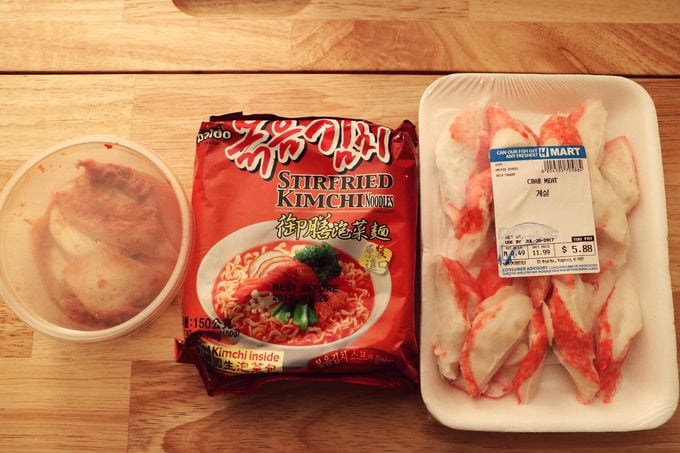 When I woke up to start Day 2, I felt a little stale and fatigued, but nothing too out of the ordinary. I continued the process of eating ramen noodles in the morning (strange concept, I know) with a pack of mild Ichiban and continued the day. I made sure to grab a cup for lunch at the office, and although I got a few inquisitions about my ramen choice, it all felt pretty standard. My body was soon back to its productive, sprightly ways, and I went through the day without much thought to my culinary experiment. For dinner, I ate a package of Paldo’s Stir-Fried Kimchi Noodles, a rather Korean take on ramen, to finish off. When I went to bed, I did note that I felt slightly lethargic, and I was overly eager to crawl into bed and call it a day.
When I woke up to start Day 2, I felt a little stale and fatigued, but nothing too out of the ordinary. I continued the process of eating ramen noodles in the morning (strange concept, I know) with a pack of mild Ichiban and continued the day. I made sure to grab a cup for lunch at the office, and although I got a few inquisitions about my ramen choice, it all felt pretty standard. My body was soon back to its productive, sprightly ways, and I went through the day without much thought to my culinary experiment. For dinner, I ate a package of Paldo’s Stir-Fried Kimchi Noodles, a rather Korean take on ramen, to finish off. When I went to bed, I did note that I felt slightly lethargic, and I was overly eager to crawl into bed and call it a day.
Someone who is eating ramen for every meal is unlikely to feel fantastic, even over a short period of time. “The sluggishness can be explained by poor nutrient intake,” says Jill Weisenberger, RDN, CDE, a registered dietitian and certified diabetes educator, who adds: “We need a balance of nutrients to support our energy levels.” Weisenberger noted that this experiment certainly did not offer me “good and wholesome nutrition.”
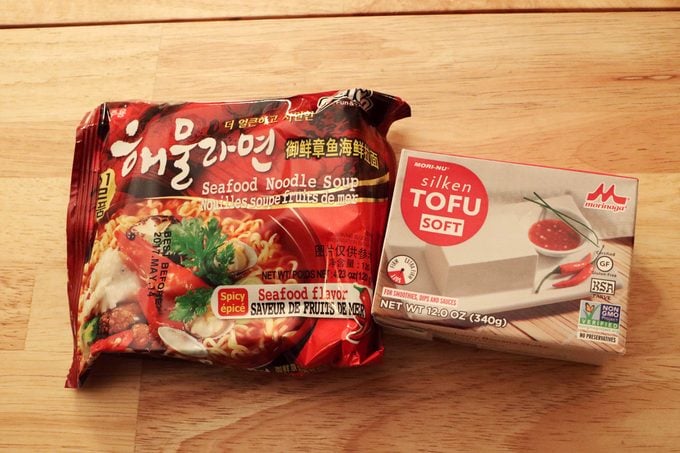
On Wednesday (Day 3), I woke up feeling pretty salty—a little bloated and grumpy—probably because of all the high sodium. All I wanted was to devour a bowl of crunchy green salad. Unfortunately, I still had two more days to go, so I decided to hack my meal to make it healthier. I threw in some slices of tofu and green onion to make my spicy seafood noodle ramen a little more edible, which made it much easier to down.
Lunch and dinner were pretty much the same. I dreaded mealtime and even considered skipping a meal to make it easier on myself. Regardless, I forced myself to swallow the chunky noodle bites and continued my daily routine—much to my chagrin. There was a slightly nausea-inducing factor of simply talking about ramen, but I was able to rotate flavors to keep some spice (no pun intended) in mealtimes. I found that preparing the noodles in different ways and adding some whole-food ingredients (kimchi, veggies, tofu, mushrooms) made the experiment a little more bearable. Nonetheless, there are only so many things to do with ramen, and I was still consuming that ridiculous amount of sodium and cholesterol with every bite.
This Is What Happens to Your Body When You Eat Instant Ramen
“Sodium is an essential nutrient and is needed by the body in relatively small amounts for most people to maintain a balance of body fluids and keep muscles and nerves working properly,” explains Dr. Seema Sarin, MD, Medical Director at EHE Health. “However, often we consume too much. Instant ramen noodles are very high in sodium, with one package containing 1,760 milligrams (mg) of sodium, or 88% of the two-gram recommendation by the World Health Organization.”
You could say I was definitely overdoing the sodium. “In the US, we eat on average about 3,400 milligrams of sodium per day,” Dr. Sarin says. “However, the American Heart Association recommends adults limit sodium intake to less than 2,300 mg per day—or about one teaspoon of table salt, and moving toward an ideal limit of no more than 1,500 milligrams per day for most adults.”
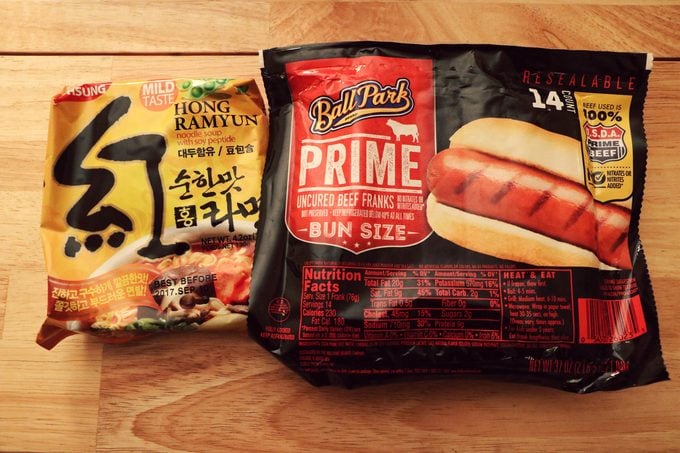 Thursday was probably the worst of all. It wasn’t that the meal options were repetitive; that didn’t bother me. My body was just feeling unsatisfyingly hollow even directly after eating. I was starting to miss that enjoyable feeling of fullness and goodness after a replete meal. I was also feeling rather queasy and sick—kind of what you feel directly after recovering from a cold—and my appetite was nearly nonexistent. Usually, I would look forward to a glass of wine with my dinner, but the only fluids I wanted to accompany the Hong ramen meal I was consuming that day (yes, I shared my last name with my dinner) was tons of water.
Thursday was probably the worst of all. It wasn’t that the meal options were repetitive; that didn’t bother me. My body was just feeling unsatisfyingly hollow even directly after eating. I was starting to miss that enjoyable feeling of fullness and goodness after a replete meal. I was also feeling rather queasy and sick—kind of what you feel directly after recovering from a cold—and my appetite was nearly nonexistent. Usually, I would look forward to a glass of wine with my dinner, but the only fluids I wanted to accompany the Hong ramen meal I was consuming that day (yes, I shared my last name with my dinner) was tons of water.
The sodium was definitely drying out my mouth, so I did end up drinking much more water than I normally would. Even so, my brain was working a little slower than normal, and I had a complete lack of energy and motivation to get up from my seat unless absolutely necessary. All I wanted to do was sleep throughout the day.
Weisenberger says the high sodium makes it understandable that I craved water and couldn’t seem to get enough of it. “When you take in a lot of sodium, your body dilutes it with water, which increases your blood volume and leaves you thirsty for more water,” this dietitian explains.
Another factor is blood pressure, Weisenberger says, adding that monitoring for high blood pressure throughout the experiment might have been wise: “You can easily have [high blood pressure] and not know.”
And that hollowness I described? Weisenberger says it was probably from a lack of fiber.
30 Ways to Get More Fiber in Your Diet Without Even Trying
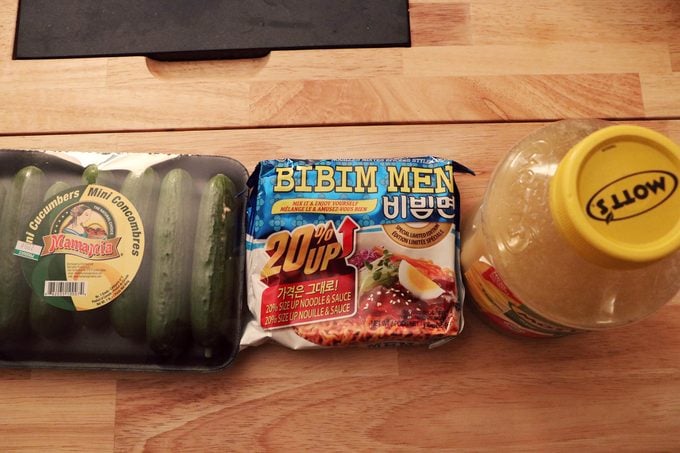
By the time Friday rolled around, I was just relieved that the experiment was over. Although it was slightly difficult to stomach the meals, I was able to eat them rather quickly with a renewed sense of gratitude. I don’t know if it was my newfound adrenaline rush or my body adjusting to the intake, but I felt better than the previous days had made me feel. Luckily, I was able to indulge myself in a Bibim Men, an instant noodle pack that is classified as ramen but definitely tastes less like it due to the fact that it has no soup. I downed that with a side of applesauce and some cucumber slices. This, says Dr. Sarin, was a good call to add some fiber to the meal “Total dietary fiber intake should be 25 to 30 grams a day from food.”
My results were both as predicted and quite surprising. One thing I noticed was that the effects were not just physical; I got incredibly moody and would snap at things that I would normally hold my tongue at (major thanks to my boyfriend for tolerating my unpredictable mood swings). The smallest things would annoy me, and I felt myself feeling irritable and cranky during the day. Weisenberger says poor nutritional intake can lead to that lack of energy…which can certainly lead to a foul mood.
At night, all I wanted to do was collapse. Although I did feel overwhelmingly moody and lethargic throughout the week and trudged to my dinner table like a kid walking into a dentist appointment, it didn’t affect my daily routine, and I was still able to complete everything that I needed to.
Admittedly, I did have a better variety of ramen to choose from to make the journey more bearable. Pricier ramen is usually made with better ingredients, like wheat flour, which a 2017 study in Asia Pacific Journal of Clinical Nutrition says may improve nutrient intake. You’d also be surprised at the bounty of ramen options out there—dry and wet, spicy and mild, and even some that include meat.
Regardless, it’s definitely not something I would recommend on a daily basis; doing so long-term is said to incite high blood pressure and a higher chance of getting diabetes and heart disease. A 2017 study in Nutrition Research and Practice found that frequent consumption of instant noodles like ramen is associated with a higher risk of cardiometabolic risk factors, like higher triglyceride levels and higher blood pressure.
I was really thankful for the first clean meal I had at an actual restaurant at the end of my experience—a salmon avocado roll and some hearty miso cod soup. I think it’s safe to say that I’m going to be staying away from ramen for the time being, but I’m not going to embark on a pantry purge and throw out all my ramen packs. I still harbor an appreciation for the quick fix and found that eating it on a consistent basis is doable due to its versatile nature.
A Vegan Ramen Recipe This Nutritionist Loves
How to make a healthy version of ramen noodles
I recommend anything you can to up the health factor; such as greens and tofu, which are relatively cheap, quick and easy to pick up from the store. You could also look for low-sodium broth options. Don’t be too ashamed of dining on a ramen bowl every so often—just don’t be like me and eat it for every. single. meal.
- Ramen Health Benefits—Are There Any? A Chef and Nutritionist Raise the Bar on Your Bowl
- I Ate Eggs Every Day for a Week—Here’s What Happened
- I Had Oatmeal Every Day for a Week—Here’s What Happened
- 7 Secret Ways Doctors Boost Their Immune Systems
Additional writing and reporting by Jaime Stathis.